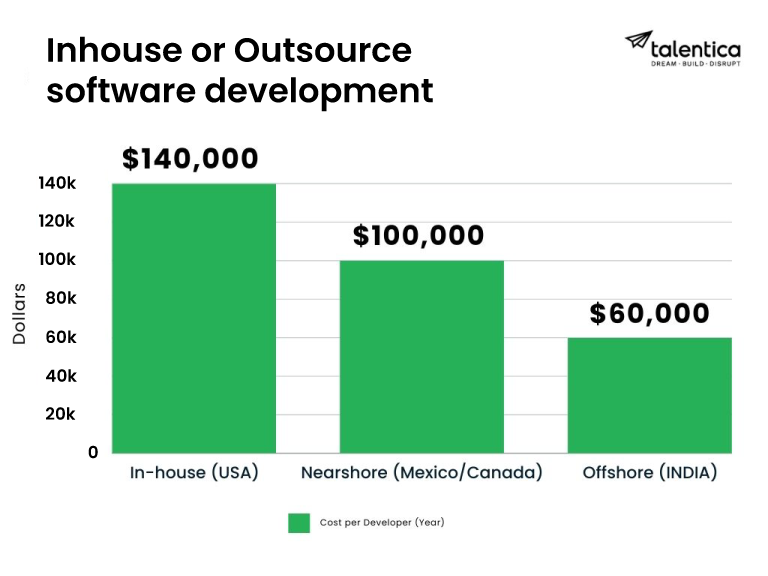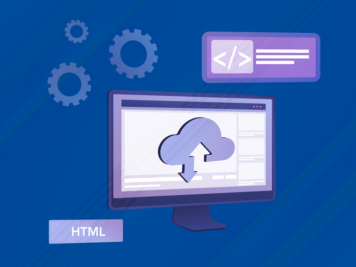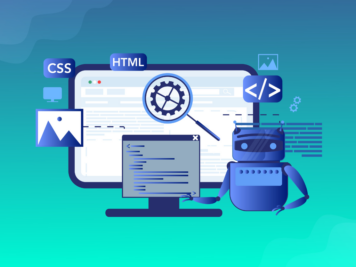Software is the foundation of modern businesses. Yet, the decision between off-the-shelf solutions and custom software is not as straightforward as it seems. Pre-packaged software offers a quick fix, but when business requirements outstrip general ones, these solutions can cause more problems than they solve. This is where bespoke software development can help. Instead of forcing your business to comply with inflexible software limits, bespoke solutions adapt to your operations, resulting in increased productivity, security, and profitability in the long run. The increased desire for custom software is reflected in industry trends: Mordor Intelligence analysts predict that the custom software development market will grow at a CAGR of 21.82% between 2025 and 2030.
But is bespoke software always the right option? And if so, should you develop it in-house or outsource it? Let’s break it down.
Why bespoke software development?
In bespoke software development, bespoke simply means “tailor-made” and software development takes that concept and applies it to the digital world. Instead of forcing your workflow to fit a pre-built (or “off-the-shelf”) solution, custom solutions are created from scratch to seamlessly fulfil the customer’s need.
Bespoke software:
- Provides competitive advantage since your software can be built around unique processes, allowing you to differentiate yourself from the market.
- Allows you to implement security measures to fit specific industry requirements.
- Offer flexibility and scalability as your business grows, so does your software, without the limitations of vendor roadmaps or licensing restrictions.
- Delivers long-term cost-effectiveness; although the initial outlay is higher, ongoing costs are typically lower than recurring license fees for conventional options.
Let’s understand it better with a real-world example.
A real-world example
One of our U.S. -based healthcare clients needed a platform that would give patients full ownership of their healthcare data while allowing for easy sharing with doctors, labs and insurance companies. Plus, they wanted the platform to allow healthcare providers and diagnostic labs to securely upload patient reports via time-bound URLs shared by patients, without requiring them to join the platform.
Without an in-house team, the client approached us to build this bespoke platform from scratch. The timeframe was just six months. By focusing on their specific requirements and core features, we delivered the MVP ahead of time.
Our bespoke software development approach ensured that the platform met the client’s unique requirements, including a user-friendly interface and secure, reliable functionality – exactly what was needed to help their users efficiently manage their healthcare data.
But is it the right choice?
Before you decide, it’s essential to determine if it will work well for your business’s needs. As a decision maker, you must ask the following essential questions before deciding:
- Are you trying to compete with established market players?
- Is the feature or the product a part of the core offerings/functionalities?
- Are your needs too unique to be fulfilled by off-the shelf software solutions?
- Do you think that differentiation and innovation are essential for the success of your technology product?
- Is personalized user experience for your clientele a top priority?
- Do you need seamless integration with third-party applications or contemporary systems?
- Is maintaining security and privacy are essential part of your product’s offering?
- Are you experiencing or expecting a high growth rate, making off-the shelf solutions less economical or inefficient?
If you are answering “Yes” to these questions, then bespoke software development is a suitable solution for your business requirements.
To help you make an even better decision, let’s look at the key factors along with suggestions and reasonings in the table below.
Bespoke vs. Off-the-Shelf Software: Choosing the Right Fit with a Decision Matrix
When deciding between off-the-shelf software and bespoke software, it’s important to carefully consider your unique needs. With this decision matrix, you can evaluate key factors and choose the approach that will deliver the best results for your business.
| Questions | Bespoke Option | Off-the-Shelf Option | Example |
| How much control will I have over updates and changes? | High | Low | A financial services organization can create bespoke software that integrates real-time stock market data to make individualized investment recommendations. This degree of flexibility would not be available in the accounting software available on the market. |
| You control the development roadmap | Updates are dictated by vendor | ||
| How about scalability given future growth potential? | High | Limited | A video streaming platform can create unique applications to manage a large content library and growing customer demand. An off-the-shelf content delivery system may struggle to serve a rapidly growing content library. |
| It is easy to scale to meet your demands | It could take a lot of workarounds to scale. | ||
| To what extent can I tailor the security features to our needs? | High | Limited | A government agency can create custom software that includes multi-factor authentication procedures and data encryption for extremely sensitive information. There may not be the same amount of security customization in a document management solution available on the market. |
| It is possible to customized it to meet your specific security needs | It may not meet all your security needs. | ||
| To gain a competitive advantage, will it help me differentiate offerings? | High | Low | A rideshare company can create custom software with dynamic pricing and real-time traffic analysis for better routes and fares. Competitors using generic taxi dispatch software would lack this unique feature. |
| Able to use unique data and functions | Hard to set yourself apart from competitors using the same application. | ||
| How much investment in resources and time is required? | High | Low | An early startup looking to implement AI powered recommendation engines can initially go for AWS and Google provided AI solutions and pay as per usage. |
| Requires experience in development or outsourcing | Usually requires few internal resources for maintenance | ||
| What would be the total cost of ownership (TCO)? | High +Low | Low +High | A large hospital chain may make a significant upfront investment in custom software to manage patient visits, electronic medical records, and billing, but will save money in the long run through operational efficiency. A commercially available electronic health record system may be less expensive up front but will need to be renewed periodically and may incur additional costs for new features. |
| High (initial development) + Low (ongoing maintenance). | Low (initial purchase) + Potentially high (ongoing licenses and updates). | ||
| Who will own the intellectual property rights? | High | Low | A technology company looking to build its own intellectual property and raise its valuation may opt for bespoke development instead of using third party tools. |
| You own both the program and its intellectual property. | The provider owns the software and intellectual property. | ||
| How quickly can i respond to market changes? | High | Low | An e-commerce platform can use specialized software to tailor product suggestions and promotions based on consumer activity. An off-the-shelf e-commerce platform may have limited customization possibilities, making it difficult to respond to changing customer preferences. |
| Can be quickly tailored to meet your changing demands. | May require costly changes or workarounds | ||
| What about integration capabilities? How easy is it to integrate with 3rd party tools/platform? | High | Limited | A manufacturing organization can develop bespoke software that connects with factory floor sensors and real-time production data to improve machine performance. An off-the-shelf enterprise resource planning (ERP) system may lack the built-in functionality to interact with such specific data sources. |
| It can be easily integrated with existing systems. | Integration possibilities can be limited. | ||
| Will the software require any development expertise? | Yes | No | A research center can outsource the development of bespoke software for processing complex scientific data if it lacks specialized programming expertise in-house. An off-the-shelf data analysis program would require little in-house expertise to operate. |
| Requires in-house expertise or outsourcing to a development company. | No development expertise is required | ||
| What risk will there be of delays and cost overruns? | High | Low | A pharmaceutical company developing bespoke software for drug discovery simulations may face delays due to unforeseen technology issues, which could affect project schedules and budget. Commercially available scientific modelling software would provide more predictable development time and cost. |
| The development process may suffer delays and cost overruns. | Predictable costs and timelines. | ||
| What about the software lifespan? | High | Limited | A bespoke learning management system (LMS) can be continually updated and maintained to meet changing educational demands. An off-the-shelf LMS can become obsolete if the vendor fails to keep up with industry standards and new technologies. |
| It can be used for as long as necessary with proper maintenance. | If the provider does not update it periodically, it may become obsolete. | ||
| What is the estimated cost of ongoing maintenance and support? | Low + High | Fixed | Larger organizations with dedicated IT teams can leverage their in-house expertise to maintain custom software, potentially reducing ongoing maintenance costs. Small businesses that lack in-house expertise may face higher ongoing maintenance costs. In contrast, off-the-shelf software often includes a fixed monthly support fee. |
| It may be lower with in-house expertise, but potentially higher with outsourcing. | It is often paid for by recurring vendor support costs. | ||
| How much control will i have over my data? | High | Limited | Bespoke software allows you to track consumer behavior across multiple touchpoints to better understand their journey. Off-the-shelf marketing automation tools may provide only minimal data on email opens and clicks, limiting your ability to tailor future efforts. |
| You decide how your data is stored, segmented, and accessed. | The software predetermines data structure and access. | ||
| How much control will I have over the user interface (UI) and user experience (UX) of my software? | Complete | Limited | A bespoke mobile banking app can be designed with a user-friendly layout with easy navigation to provide a seamless customer experience. An off-the-shelf mobile banking app can feature a generic user interface that does not address the unique needs and preferences of the bank’s customers. |
| Full control over the UI and UX of the software. | Limited control over the UI and UX. | ||
| How well will the software adapt to the evolving industry? | High | Limited | A bespoke content management system for a news organization can be quickly modified to incorporate new multimedia formats and social media platforms as technology advances. An off-the-shelf content management system can require extensive adjustments or workarounds to adapt to these changes. |
| Very flexible to meet changing business demands | Could find it difficult to keep up with the rapid advancements in the industry. | ||
| How much cost can be saved in the long term? | High | Limited | The bespoke news CMS can deliver long-term cost savings by eliminating ongoing license renewals for additional features that can be developed in-house. As the demands of news organizations expand, off-the-shelf CMS can require the purchase of additional feature licenses, increasing overhead over time. |
Now, if you think bespoke software development is the right option for you, let’s look at the costs involved. But a crucial question remains: Inhouse or Outsource?
In-house vs. Outsource Bespoke software development
Let’s answer it considering a scenario. Suppose a growing technology company based in a large tech hub like San Francisco, is looking for bespoke software development for a project of at least one year and includes 5 developers.
Let say company is considering 3 options to carry on the development project:
- Do it In-house.
- Outsource it to nearshore partner (in Mexico or Canada)
- Hire an Offshore partner in India.
Here’s an exploration of three different development options—in-house, nearshore, and offshore—focusing on operational efficiency, flexibility, and cost-effectiveness.

Scenario 1: In-house Development in the USA
In-house development within the USA offers the highest level of control and ensures strong alignment with company culture and business practices, critical for complex projects. This setup provides a deep understanding of the local market, which helps in achieving an optimal product-market fit. Additionally, stringent IP laws in the USA offer robust protection for proprietary technology.
However, this option is financially demanding:
Cost per developer per year: $140,000.
Total cost for five developers: $700,000 per year.
Choosing this route ensures maximum responsiveness to market demands but consumes a significant portion of resources, potentially limiting flexibility and scalability without substantial additional investment.
This option also involves all the hassles like hiring time, attritions, etc., that come with operating a technology team in a very competitive environment. It also takes a significant time to train and manage the team. It is not recommended if it is a short term or less explored project.
Scenario 2: Nearshore Development
Opting for nearshore development in regions like Mexico or Canada allows for considerable control with cultural and geographical proximity that can simplify communication challenges. Shared time zones facilitate effective collaboration and real-time problem-solving, which are essential for agile development practices.
The cost dynamics in nearshore settings offer some savings compared to in-house development but still require a considerable budget:
Cost per developer per year: $100,000.
Total cost for five developers: $500,000 per year.
This scenario provides a balance between cost and operational convenience, saving money compared to in-house development while maintaining closer oversight than what might be feasible with offshore options. Nearshore development offers moderate cost savings with easier communication and management than offshore.
Scenario 3: Offshore Development in India
Offshore development in India is recognized for its exceptional cost-effectiveness and access to a vast, skilled talent pool. A good offshore partner in India will charge around $60,000 per developer for experienced software developers who are on par with top software engineers in the US, but at a fraction of the cost:
Annual cost per developer: $60,000.
Total cost for five developers: $300,000 per year.
This pricing means that for the cost of hiring just two senior developers in the USA, a company could fund a full five-person team in India for the same period. These developers are not only cost-effective but also bring additional advantages such as the ability to work around the clock due to time zone differences, enhancing productivity and shortening time-to-market. Offshore development in India provides the most substantial cost benefits and access to a broad talent pool, ideal for extensive, budget-conscious projects requiring specialized expertise.
For a company looking to extend its budget while ensuring access to top-tier talent and maintaining control over complex project dynamics, offshore development in India offers compelling advantages, especially when cost-effectiveness is a priority. This strategy not only provides financial relief but also includes the flexibility and scalability needed to support long-term growth and innovation.
So, the winner is offshore?
Yes, in most cases it looks like the best strategy, but it is also the riskiest among others. There are 1000s of options to choose from and is difficult to find the right among the heap of options.
We have a separate article to provide a step-by-step procedure to find, evaluate and select the right offshore software development partner.
Conclusion
Choosing between custom and off-the-shelf software can be difficult, but knowing your requirements is essential to making the right choice. The article explored the pros and cons of each solution, including a comprehensive decision matrix to understand the key elements that set them apart.
Bespoke software provides unmatched control, flexibility, and the opportunity to customize features to meet your specific business needs. However, it requires a considerable initial investment and time. Commercially available software offers a faster and perhaps less expensive solution but may lack customization options and the ability to easily integrate with current systems.
Here’s a quick recap to help you decide:
Go Bespoke if: You have unique business demands, require a high level of customization, and value a user experience tailored to your target audience.
Consider off-the -shelf if: You’re on a budget, want a quick solution, and your needs can be addressed through easy-to-access features.
Why Talentica?
Since 2003, Talentica has been offering high-quality software solutions tailored to businesses of all sizes. With a good knowledge of the US market, we excel in working with clients in this region.
Our engineering and AI teams, which include top 2% talent selected from India’s top engineering institutes (IIT/NIT/IISc), ensure that your project is handled by the most talented people in the industry.
Recognizing the value of customized solutions, our team collaborates closely with clients to understand their specific needs and goals, building dedicated teams with the skills necessary to make dreams come true.
Beyond development, our team provides ongoing support and maintenance to ensure the software remains relevant to changing demands
FAQs
What is bespoke software development
Bespoke software development involves developing software solutions tailored to a company’s specific needs and requirements. It is a collaborative process between a company and its software development partner, resulting in a customized solution that addresses specific problems, goals, and objectives.
Who should consider bespoke software development?
Bespoke software development is ideal for businesses that have very specific needs that cannot be fulfilled with commercially available software. It is appropriate for any business seeking flexibility and control over its technological solutions. Bespoke solutions may also be beneficial to companies that emphasize user experience or have special branding demands.
How long does it take to develop bespoke software?
The time needed to create bespoke software is variable and depends on the complexity of the project, team size, and resources available. Bespoke software development projects may take a few months to more than a year to complete.
Is bespoke software scalable as my business grows?
Yes, bespoke software can easily scale to grow in accordance with business demand. Since the solution is developed directly for your business, it can be constantly updated and scaled as and when needed.
How secure is bespoke software compared to conventional software solutions?
Building bespoke software provides a higher level of protection than typical software solutions. Because the solution is tailored to your individual needs, it can incorporate advanced security features and procedures to protect your data and systems.
Which industries benefit most from bespoke software development?
Industries that demand unique or customized solutions can greatly benefit from bespoke software development. This includes industries like healthcare, banking, education, and transportation. Organizations of all sizes with unique requirements can benefit from bespoke software development as they cannot be met with off-the-shelf solutions.
With the right offshore partner in India, businesses can take advantage of cost-effectiveness and access to top talent to foster innovation and development while staying within budget. Offshore development is increasingly popular among global businesses for its unique advantages and long-term benefits. Talentica supports this with tailored software development, built around each client’s requirements.
Can bespoke software integrate with my existing systems?
Yes, bespoke software can be developed to work with your existing systems and processes. We have done it for our clients already. We started by understanding the existing infrastructure and needs. It helped us ensure that the unique solution integrates seamlessly with minimum disruption to daily operations.
How do I find the right bespoke software development company?
To choose the right bespoke software development company, conduct thorough research and evaluation of potential organizations. Look for a company that has a proven track record of successful projects, experienced and qualified engineering teams, and effective communication methods. Consider geography, time zone compatibility, and cultural fit before making your selection.









